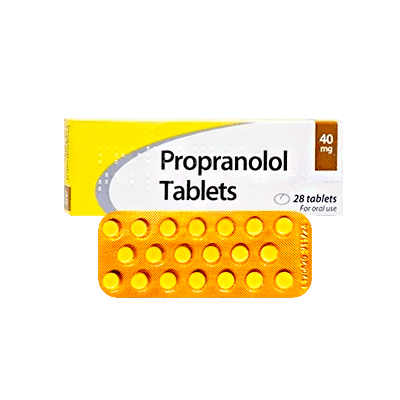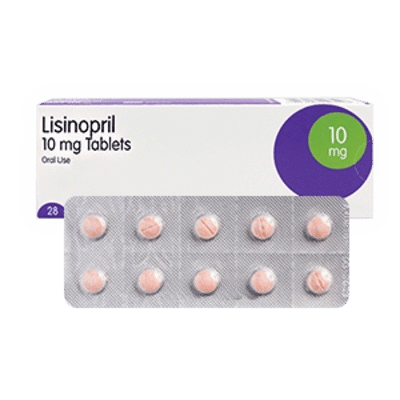I started taking Propranolol as prescribed by my doctor to control migraines. I felt the effect after just a few days – the attacks became less frequent and the pain was not as strong. A pleasant bonus was that my anxiety decreased and my heartbeat no longer bothered me. I did not notice any side effects.

Propranolol
Active ingredients: Propranolol- Quality products
- Support 24/7
- Fast delivery
What is it?
Propranolol is a drug that belongs to the class of non-selective beta-blockers. It is used to treat various cardiovascular diseases, such as hypertension, angina and arrhythmia. The drug can also be prescribed to prevent migraines, treat tremors and in some cases to reduce anxiety.
Propranolol works by blocking beta-adrenergic receptors, which reduces the effect of adrenaline on the heart and blood vessels. This helps to reduce the heart rate, reduce the force of heart contractions and lower blood pressure. Due to this, the drug helps to improve blood circulation and reduce the load on the heart, which is especially important in the treatment of chronic heart disease.
Propranolol is often used in medicine due to its multifunctional action. It can be prescribed both for regular use in case of chronic diseases and as a single dose for rapid relief of symptoms, such as tachycardia or anxiety.
Composition
Propranolol is an active substance that is part of the drug of the same name. It is a non-selective beta-blocker with antiarrhythmic, antianginal and hypotensive effects. Depending on the form of release and the manufacturer, the drug may contain various excipients that ensure the stability and bioavailability of the drug.
- Active substance: Propranolol hydrochloride.
- Excipients: starch, lactose, talc, magnesium stearate and other components that may vary depending on the manufacturer and form of release (tablets, capsules, solution).
- Shell: in the case of tablets or capsules, may contain dyes and other additives that ensure the appearance and ease of administration.
How to use?
Propranolol should be taken as recommended by your doctor, as the dosage and regimen may vary depending on the disease and individual characteristics of the patient. The drug is usually taken orally with plenty of water, regardless of food intake. However, it should be taken into account that food intake can slow down the absorption of the drug, so in some cases it is recommended to take it on an empty stomach.
The usual regimen for taking Propranolol is as follows:
- For arterial hypertension: The initial dosage may range from 40 to 80 mg twice a day, with a possible gradual increase in the dose under the supervision of a doctor until the desired therapeutic effect is achieved.
- For angina and arrhythmia: The dosage varies from 10 to 40 mg three to four times a day, depending on the severity of symptoms and the bodys response to treatment.
- For the prevention of migraines or tremors: Usually 40 mg is prescribed twice a day, with a possible increase in dosage up to 160 mg per day.
- For anxiety: Depending on the intensity of symptoms, a single dose of 40 mg or regular intake of up to 120 mg per day, divided into several doses, may be prescribed.
How does it work?
Propranolol works by blocking beta-adrenergic receptors, which are found in the heart and other organs. These receptors are responsible for the bodys response to stress hormones such as adrenaline. When Propranolol blocks these receptors, the effects of adrenaline are reduced, resulting in a slower heart rate, a reduced force of contractions, and dilation of blood vessels.
This mechanism of action provides several important therapeutic effects:
Lowering blood pressure: By reducing the force and frequency of heart contractions, blood flows through vessels with less pressure.
Anti-arrhythmic effect: Propranolol stabilizes the heart rhythm, preventing irregularities such as tachycardia or extrasystole.
Anti-anginal effect: The drug reduces the hearts need for oxygen, which helps prevent attacks of angina.
In addition, Propranolol can penetrate the blood-brain barrier and affect the central nervous system, which explains its effectiveness in the treatment of anxiety and the prevention of migraines. Thus, the drug has a complex effect, providing an improvement in the patients condition in various cardiovascular and neurological disorders.
Indications
Propranolol is used to treat and prevent various diseases associated with the cardiovascular system, as well as to control some neurological and psychosomatic conditions. This drug has a wide spectrum of action, which makes it useful in the treatment of various pathologies.
- Arterial hypertension: The drug helps to effectively control high blood pressure, reducing the risk of complications such as heart attack or stroke.
- Angina pectoris: Propranolol is used to reduce the frequency and intensity of angina attacks, reducing the hearts need for oxygen.
- Arrhythmias: The drug is prescribed to correct heart rhythm disorders such as tachycardia, extrasystole and atrial fibrillation.
Contraindications
Although Propranolol is an effective drug for treating many diseases, its use is limited by a number of contraindications. These restrictions are related to its mechanism of action and its effect on the cardiovascular and other body systems. Before starting to take it, you should discuss all possible risks with your doctor and make sure that the drug is right for you.
- Bradycardia: Propranolol is contraindicated in the presence of severe bradycardia (low heart rate), as it may lead to an even greater slowing of the heart rate.
- Heart failure: The drug should not be used in decompensated heart failure, as it may worsen the patients condition.
- Atrioventricular block II and III degrees: Propranolol can aggravate conduction disorders in the heart, which can be dangerous.
- Hypersensitivity to the components of the drug: Allergic reactions to Propranolol or excipients included in the drug are possible.
Side effects
Although Propranolol is widely used and generally well tolerated, like any medication, it can cause side effects. These effects can vary depending on the dosage, duration of treatment, and individual response. Side effects most often occur at the beginning of therapy and may decrease as the body adapts to the drug.
- Bradycardia: One of the most common side effects is a slow heart rate, which can lead to weakness and dizziness.
- Fatigue and weakness: The drug can cause a feeling of fatigue and a general decrease in energy, especially in the first days of use.
- Hypotension: Propranolol can lower blood pressure too low, which can be accompanied by dizziness, especially when standing up quickly.
- Cold extremities: Due to the effect on blood vessels, the drug can cause a feeling of cold in the hands and feet.
- Bronchospasm: Although rare, bronchospasm is possible, especially in patients with a predisposition to bronchopulmonary diseases.
- Digestive problems: Nausea may sometimes occur, vomiting, diarrhea, or constipation.
- Psycho-emotional changes: Mood changes may occur, including depression, anxiety, or sleep problems.
Frequently asked questions
Propranolol Reviews and Experiences
I use Propranolol before public speaking on the advice of a doctor to reduce anxiety and trembling. The effect is excellent - confidence returns, and my hands no longer shake. It really helps to control stressful situations.
The medicine was prescribed to treat arrhythmia. At first, I was a little scared that it was a beta blocker, but the result was very good. My heart rate became stable, and I feel much better. The only downside is that sometimes I feel a little weak, but otherwise the medicine met my expectations.









